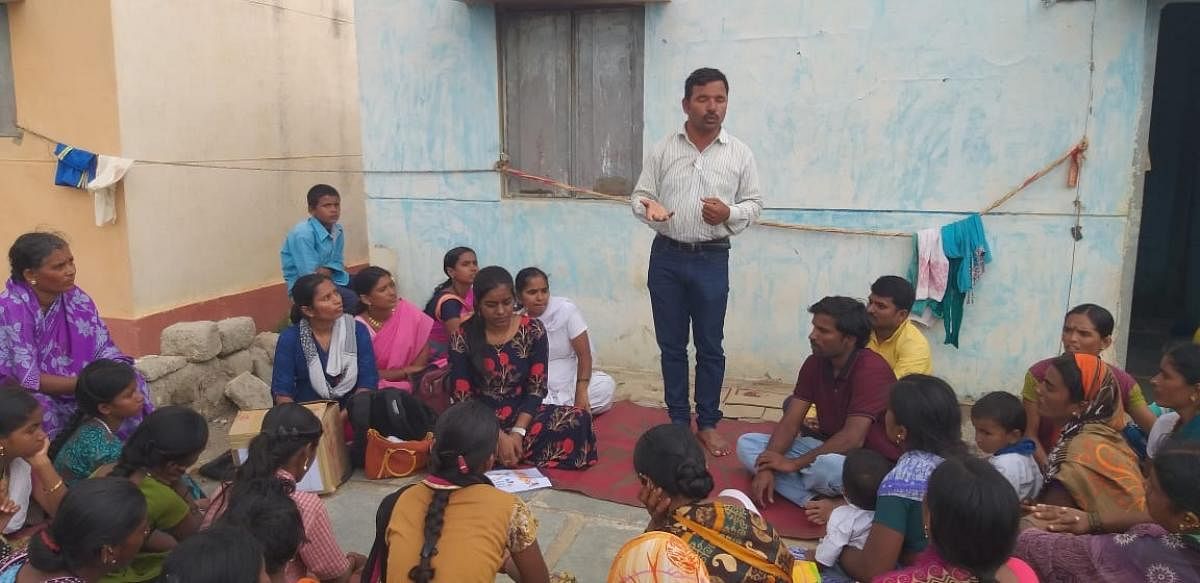
Menstrual cups have come as a relief to many women in flood-affected Karnataka thanks to a campaign, ‘Guttininda Battaledege Dittanadige - (From secrecy, the firm walk towards [menstrual] cups).
At least 650 units of the reusable hygiene product have so far reached college-goers, field workers and homemakers among other women in the remote villages (including relief camps) of Gadag, Chikkamagaluru, Shivamogga, Bagalakote, Mysuru and Kodagu districts for the first time.
The idea came about when Sanjyothi V K, a filmmaker, considered substitution for sanitary napkins as relief material.
“The problems of using pads — odour, moisture, rashes, changing them in between work — are many already. During floods, they’ll only multiply — lack of toilets, access to pads, and disposal problems. And, as a menstrual-cup user, the freedom I get is incomparable. So I thought the cups would benefit the flood-affected even more. Many countered the idea, said it would not click as the women were psychologically affected already and would need time to accept the change,” she says.
But Sanjyothi was convinced, and so were three others — Jyothi Hitnal (NGO worker), Deepa Girish ( handloom entrepreneur) and Shivaleela Nandagavi (teacher) — the key crafters of the campaign.
Within two days, the idea, which first echoed on social media, materialised when it received enough monetary backing to cover the cost of 1,000 good-quality menstrual cups.
The team dispatched the cups to different locations and sought the help of those in the region to bring women together as demonstration and distribution awaited. An ASHA worker and a male doctor helped, besides medical students and commoners.
At the location...
The ground reality has been revealing, says Shivaleela Nandagavi (Shivi), a teacher at a primary school in Gadag, who has demonstrated the use of menstrual cup and counselled scores of women since mid-August.
“First, women simply did not show up for the demo. Then we changed tactics and said we have relief material. When they congregated and conversed, we gathered that some women still used cloth and many didn’t have access to pads or toilets. We told them the advantages of the cup. Then they accepted it.” She recalls, “In Holealuru (Ron taluk, Gadag district) a man said he wanted a cup for his sister. When we went to the house, we heard that the sister (Manjula) had lost her baby sometime back and had now started menstruating. The house only had two bottles of water, a mat and a make-shift cooking stove assembled with logs and stones. She was thrilled to get the menstrual cup! She then offered to make us tea in that situation.”
In her feedback, Shobha Manesagi, a 40-year-old from a village in Gadag, has said that using the menstrual cup makes her forget her period.
“In Amaragolu (Ron taluk, Gadag district), a poorly rehabilitated area, we gave out 40-50 cups,” says Shivi, and points out that, “The most accepting of them have been the lot from Heggalatti, in Thirthahalli taluk, Shivamogga. We went looking for this village on August 26 on a bike because it’s inside a forest. It was smashed by landslides. Here, most of the women came straight from the fields for the demo, asked questions, and took the cups,” Shivi adds.
The surprise has been the support of men in many ways, according to Sanjyothi. “Some men went back to their homes to talk to their womenfolk about it. Some transported and distributed the cups. A first-year medical student offered the only money he had, Rs 50, because he was determined to be of some help.” Kotresh Kottur, a writer, who accompanied Shivi in Gadag, says he joined the team because of his strong feminism stance.
The campaign intends to reach more women in the days to come.